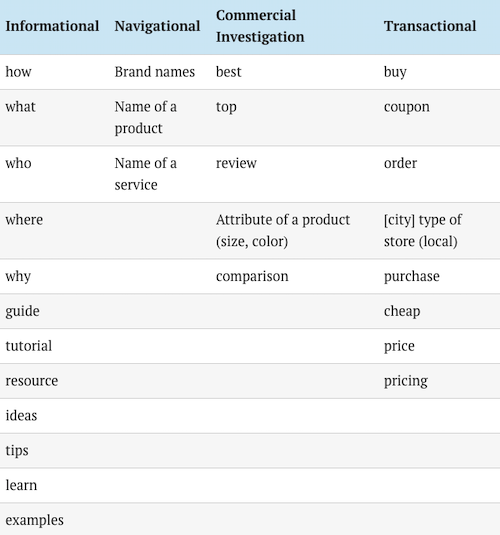BERT: Google’s AI-Powered Search Algorithm Update
by Ashley Topp | Updated Jun 6, 2025
Google just announced a major new AI-powered search algorithm update, BERT.
What does that mean for your organization and marketing efforts — specifically when it comes to SEO and ranking organically on Google?
Let’s dive in!
What is BERT?
Google’s #1 job is to serve relevant content based on the user’s query. With their new AI-powered update, BERT, this mission has been kicked into high-gear.
At a very high level, BERT (Bidirectional Encoder Representations from Transformers) is a learning algorithm that helps a machine to understand the complexities and circumstances of sentences. It is intended to be able to better decipher long-tail queries in order to greatly improve Google’s ability to understand context better.

Essentially, Google is becoming more conversational. Instead of looking at keywords to serve up results, it’s looking at full sentences in order to understand the intent of the query.
This will be especially impactful for the new wave of voice search, where users tend to use more “natural” language (“What Is B2B Digital Marketing” vs. “Hey Google, can you tell me more about digital marketing for B2B companies?”).
So, the question is: How do you ensure that the content you create plays nice with BERT?
The answer is to create hyper-relevant content that is optimized for search intent.
Continue reading to understand what search intent is, why it matters, and how to optimize your own content for search intent.
What Is Search Intent (and Why Does It Matter?)

Simply put, search intent is the “why” behind a search query. If you understand the “why,” you are able to identify what type of content is the most relevant in order to fulfill the purpose of their search.
Users open up Google and type in a search for various reasons, and it’s Google’s job to determine that reason and serve them the most relevant results for their query.
In order for Google to serve up YOUR content, it must align with, and be optimized for the searcher’s "why."
Key Takeaway: Relevance is the foundation of SEO success.
Understanding The Types of Searches
The first step to creating content that aligns with search intent is to understand the 4 categories of searches: Informational (ask), Navigational (go), Transactional (do), and Commercial Investigation (research).
Informational
When a searcher initiates an “informational” query, it means they are looking for more information about whatever topic it is they are searching for. While not all informational searches are formulated as questions, it is common. Content that aligns well with informational queries are often blogs, whitepapers, and video.
Navigational
The searcher is looking for a specific website or product. Here, a user may just search a brand name in order to find the website homepage. Search results for navigational queries are often website home pages or product/service pages.
Transactional
A user initiating a transaction query means they want to achieve a specific action, such as making a purchase. Often, you’ll see results such as pricing guides or coupons when you conduct a transactional search.
Commercial Investigation
In this scenario, a user is in the market for a product or service, but they’re still weighing their options. Reviews and comparisons are common search results for commercial investigation-type queries.
Key Takeaway: There are 4 types of searches: informational, navigational, transactional, and commercial investigation.
Use Keyword Modifiers To Assume Intent
Once you get the gist of the 4 categories, the next step is to be able to dissect a query and understand which category they most likely fall under. The easiest way to do this is by using keyword modifiers — which are “hint” words that come before or after the root keyword.
Here are four examples of queries you might see around the term “digital marketing”:
“What is Digital Marketing” (Informational)
“Digitopia Digital Marketing Agency” (Navigational)
“Digital Marketing Agency Reviews” (Commercial Investigation)
“Digital Marketing Software Pricing” (Transactional)
While each query revolves around the same root keyword, we can assume which category each one falls under. A user searching for “what is digital marketing” likely isn’t ready to get pricing on marketing software yet. Instead, they would likely benefit from an in-depth blog post or video about the fundamentals of digital marketing.
Here are some examples from Ahrefs of modifiers for each category:

Key Takeaway: Use modifiers to help you assume the searcher’s intent
Keyword Research For Intent-Based SEO
Now that you understand how to identify and dissect a search query to understand intent, it’s time to apply these tactics to your own SEO strategy.
To do this, you’ll start creating content the same way that you normally would: keyword research.
If you’re using a keyword research tool (we like Ahrefs), you can use the modifiers above to filter for keywords with specific intent when doing keyword research.
Here’s how to do this in Ahrefs:
- In the keyword explorer, type in your root keyword and search.
- Once results populate, on the left-hand menu select “having same terms.”
- Above the list of results, find the “include” toggle. Click on this and make sure you select the option “Any word.”
- Enter the keyword modifiers outlined above and/or add your own. Make sure the modifiers you choose are aligned with the type of content you are creating (see examples in the “Types of Searches” section above)
- Click “Apply.”
Now, you have a list of queries that users are actually searching for that align with the type of content you plan on creating.
You can filter these results further to find a phrase that provides good search opportunity, meaning a high search volume and a low keyword difficulty.
Once you identify a keyword/key phrase that you want to rank for — it’s time to create optimized content!
Key Takeaway: Use a keyword research tool, like Ahrefs, to find intent-optimized keywords/key phrases.
Creating Content That Is Optimized For Search Intent
At this point, you’ve done the research, you know what keyword/phrase you’re optimizing for, and you’re ready to start creating.
Your content must provide both the search engine and the reader enough context to understand what your content is about and what it serves to do.
To do this, there are four essential places where you should try to include your keyword: title tag, headers & body, URL, and meta description:
- The title tag (i.e., headline) of your blog post will be both the search engine's and reader's first clue as to whether or not your content is relevant. So, including a keyword here is vital.
Tip: Make sure your keyword is included within the first 60 characters of your title, as this is roughly where titles get cut off in SERPs.
- In the headers and body copy, make sure you mention your keyword at a normal cadence in a natural way. Don't go overboard at the risk of being penalized for keyword stuffing.
- Search engines also look to your URL for context on what your post is about, and it's one of the first things it'll evaluate on a page — so make sure you include your keywords in it.
- Your meta description is another area that the search engine looks to for context regarding the purpose of your content, so it’s important to include your keywords here, too.
Remember: metas are also user-facing in the SERPs, so while they don’t have to be beautifully written — make sure that they are reader-friendly.
Key Takeaway: Optimize for your keyword in your title, headers and body copy, URL, and meta description.
Conclusion
In modern-day SEO, it’s Google’s job to give searchers what they want, and this mission kicked into high-gear with their new algorithm update, BERT. It is said that this new AI-powered update will be able to understand the context of complex and long-tail sentences.
To see continued success in SEO with BERT, the way to gain exposure on SERPs is by creating great content that is optimized for intent.
While creating awesome content and applying white-hat SEO tactics isn’t always easy, it’s certainly a worthy pursuit and Google will reward you for doing so.
Once you have great SEO in play, wondering what’s next? Want to understand how to systematically turn your website visitors into sales opportunities? Learn about the Digital Utopia Methodology.








